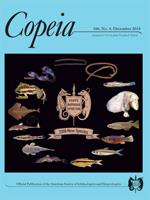Pareiorhaphis mucurina, new species, is described from the Preto River, a headwater tributary of the Mucuri River basin, Minas Gerais State, eastern Brazil. This description represents the first record of Pareiorhaphis in the Mucuri River basin, the intervening drainage between the Doce and the Jequitinhonha rivers, two large coastal drainages in eastern Brazil that are inhabited by six species of Pareiorhaphis. Pareiorhaphis mucurina, new species, is promptly diagnosed from all congeners by having a distinct, narrow area in the lower lip along and just posterior to each emergent tooth series of the dentary completely devoid of papillae and the lateral margin of the lower lip with a distinctly enlarged flap of skin, forming a continuous connection with most of the maxillary barbel. In addition, the new species can be further distinguished from all congeners by having the upper lip with distinctly shaped papillae, which are coalesced to form three or four transverse series of elongate skin folds. The well-developed dorsal-fin spinelet, the smaller orbital diameter, and features related to morphology of the fleshy lobes on the lateral portion of head of adult males, also distinguish the new species from most congeners.
BioOne.org will be down briefly for maintenance on 17 December 2024 between 18:00-22:00 Pacific Time US. We apologize for any inconvenience.
How to translate text using browser tools
1 November 2018
A New Species of Pareiorhaphis (Loricariidae: Neoplecostominae) from the Mucuri River Basin, Minas Gerais, Eastern Brazil
Edson H. L. Pereira,
Tiago C. Pessali,
Roberto E. Reis
ACCESS THE FULL ARTICLE





